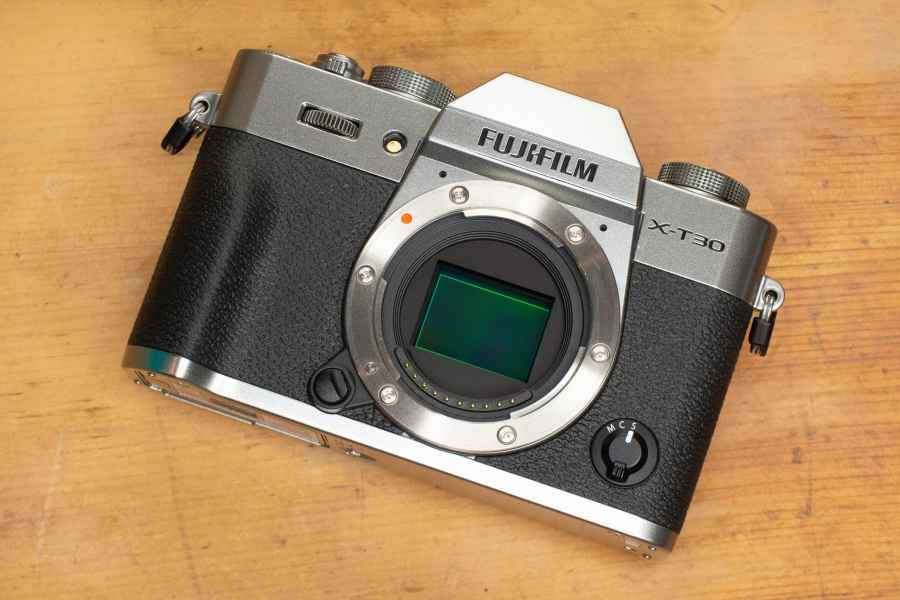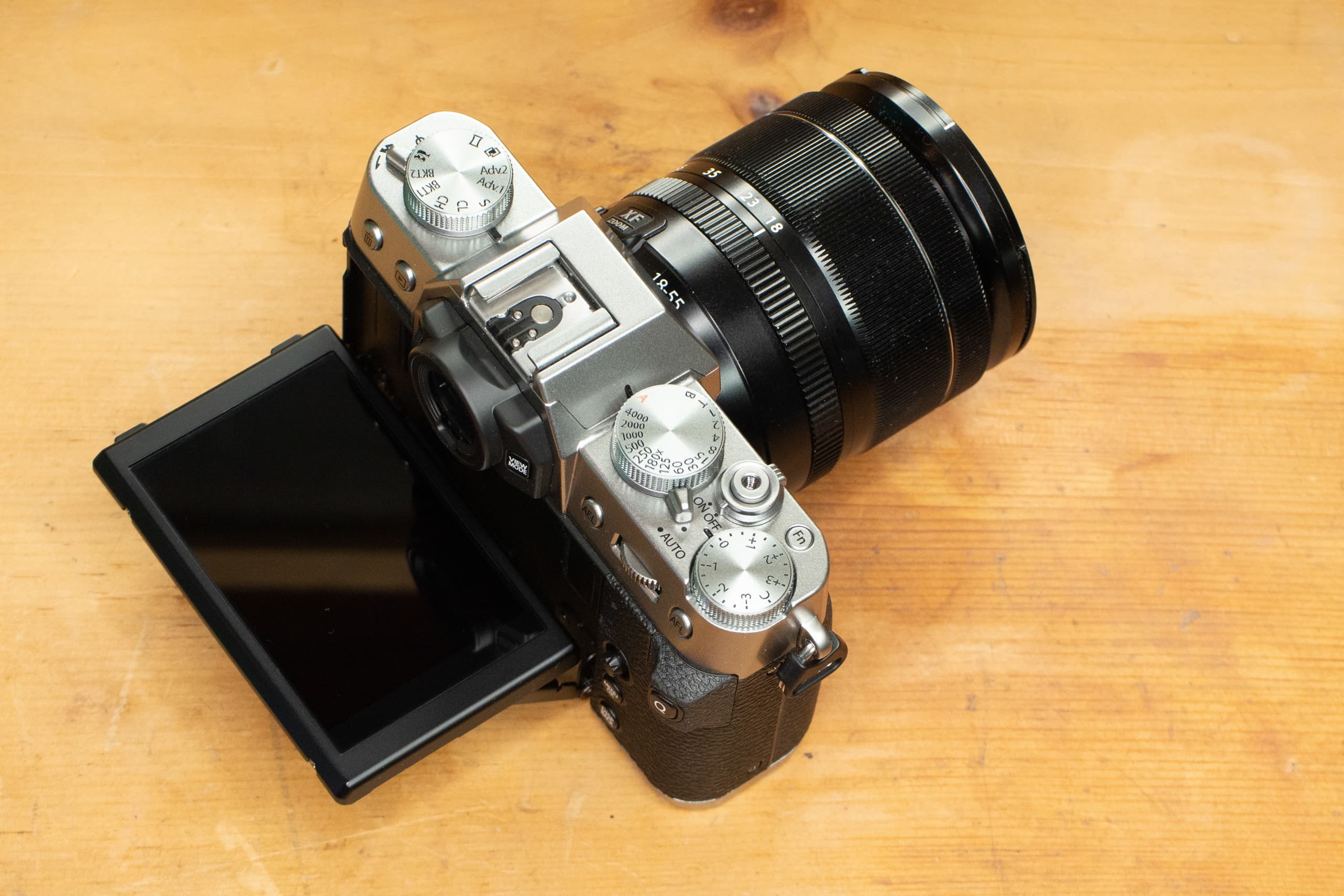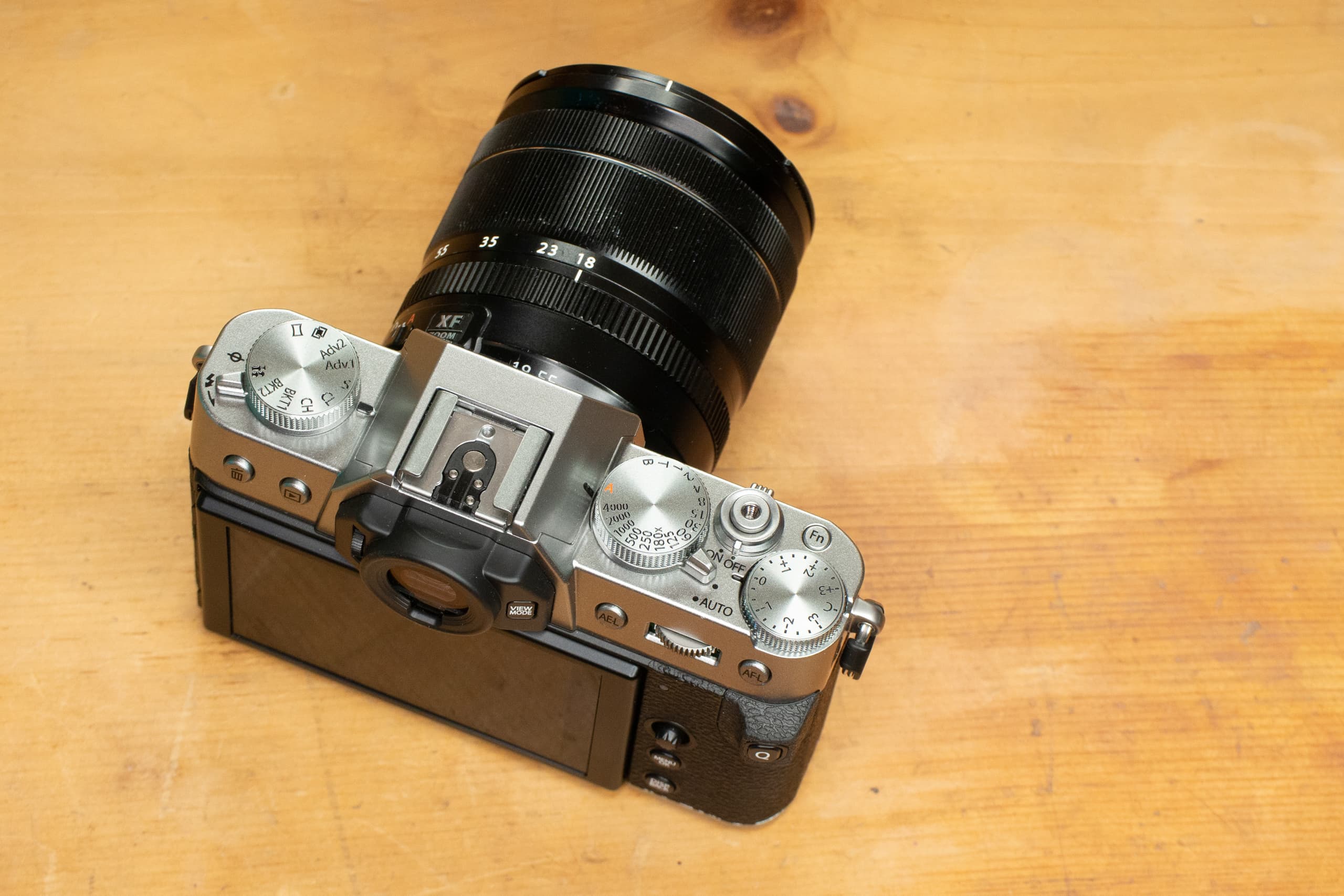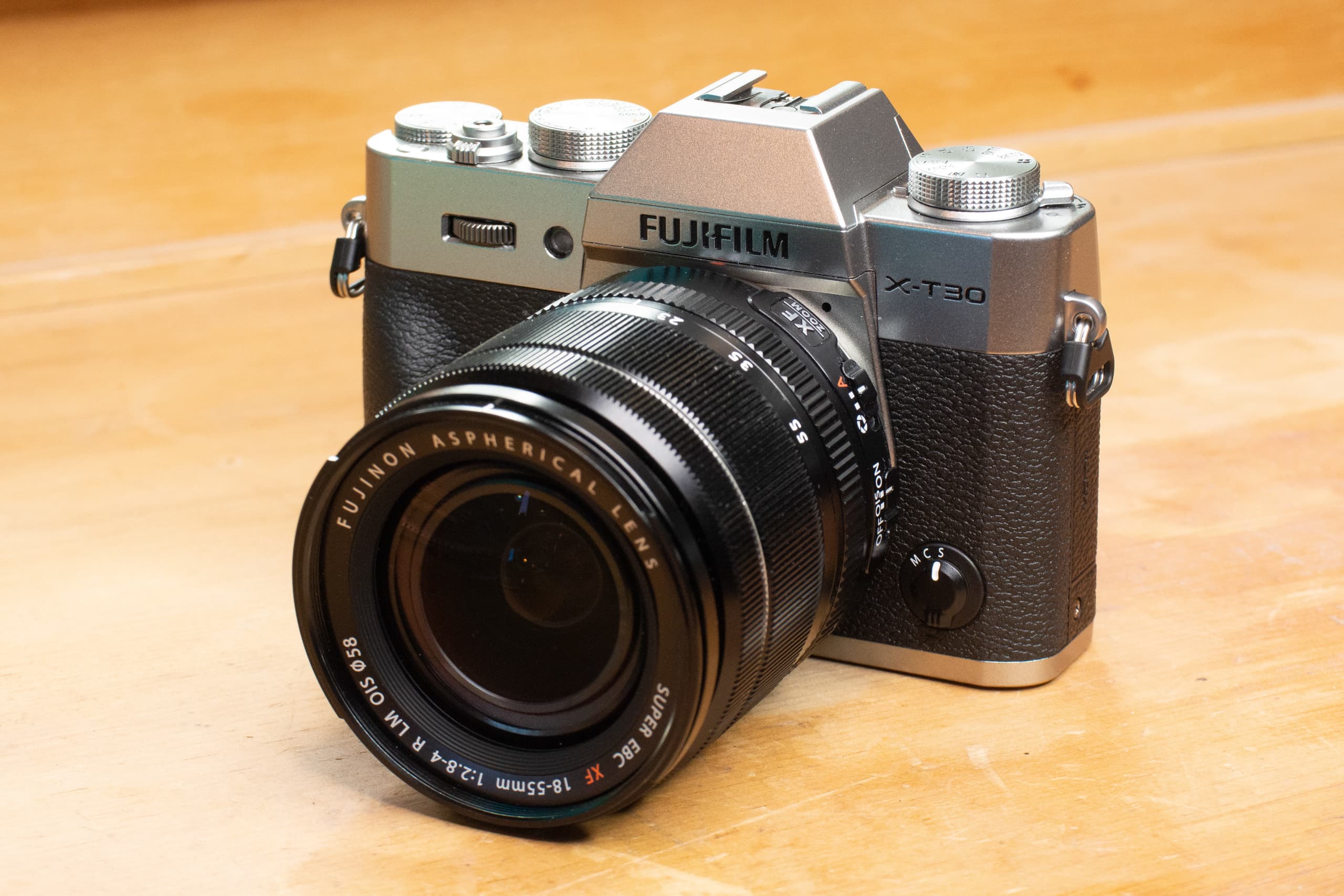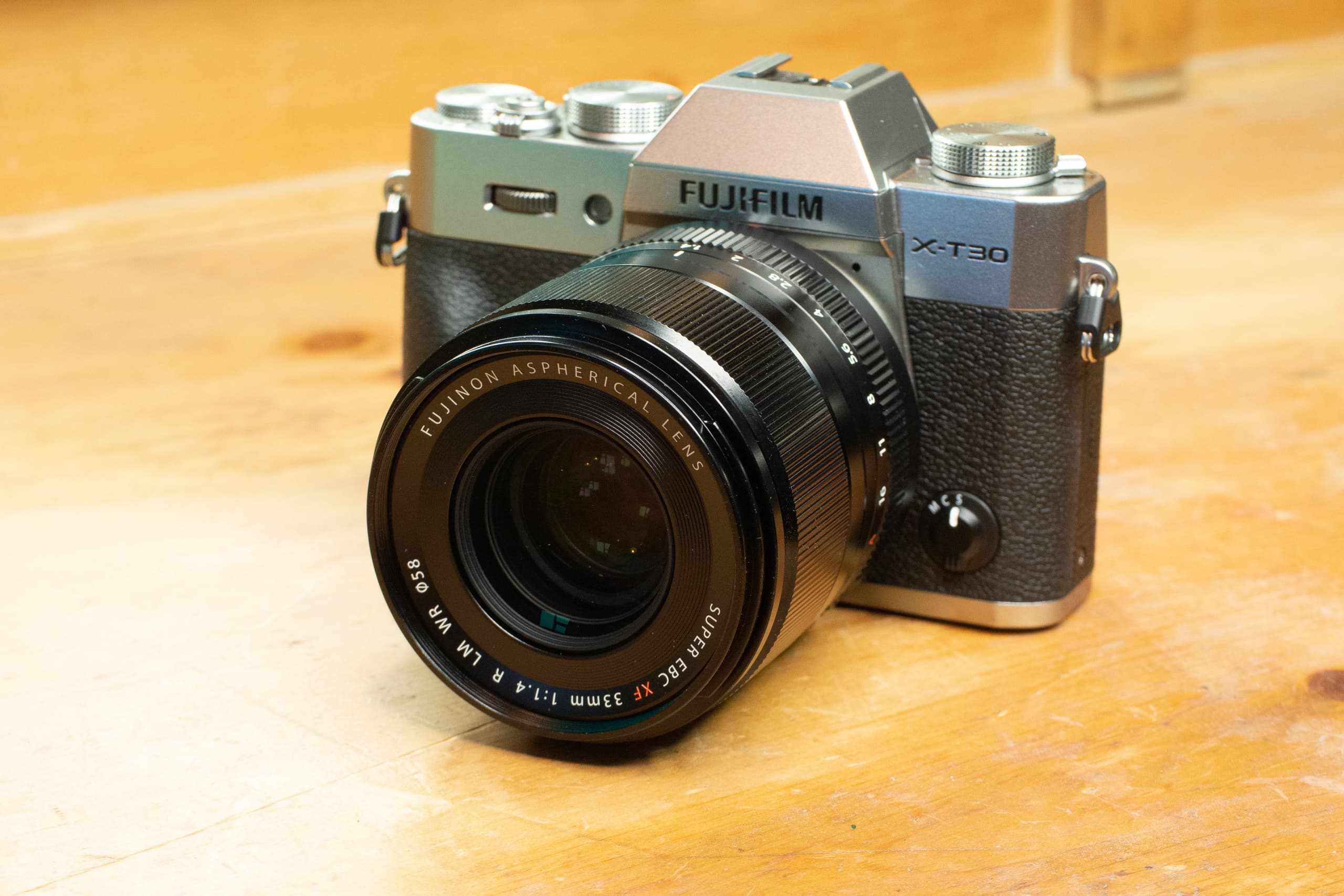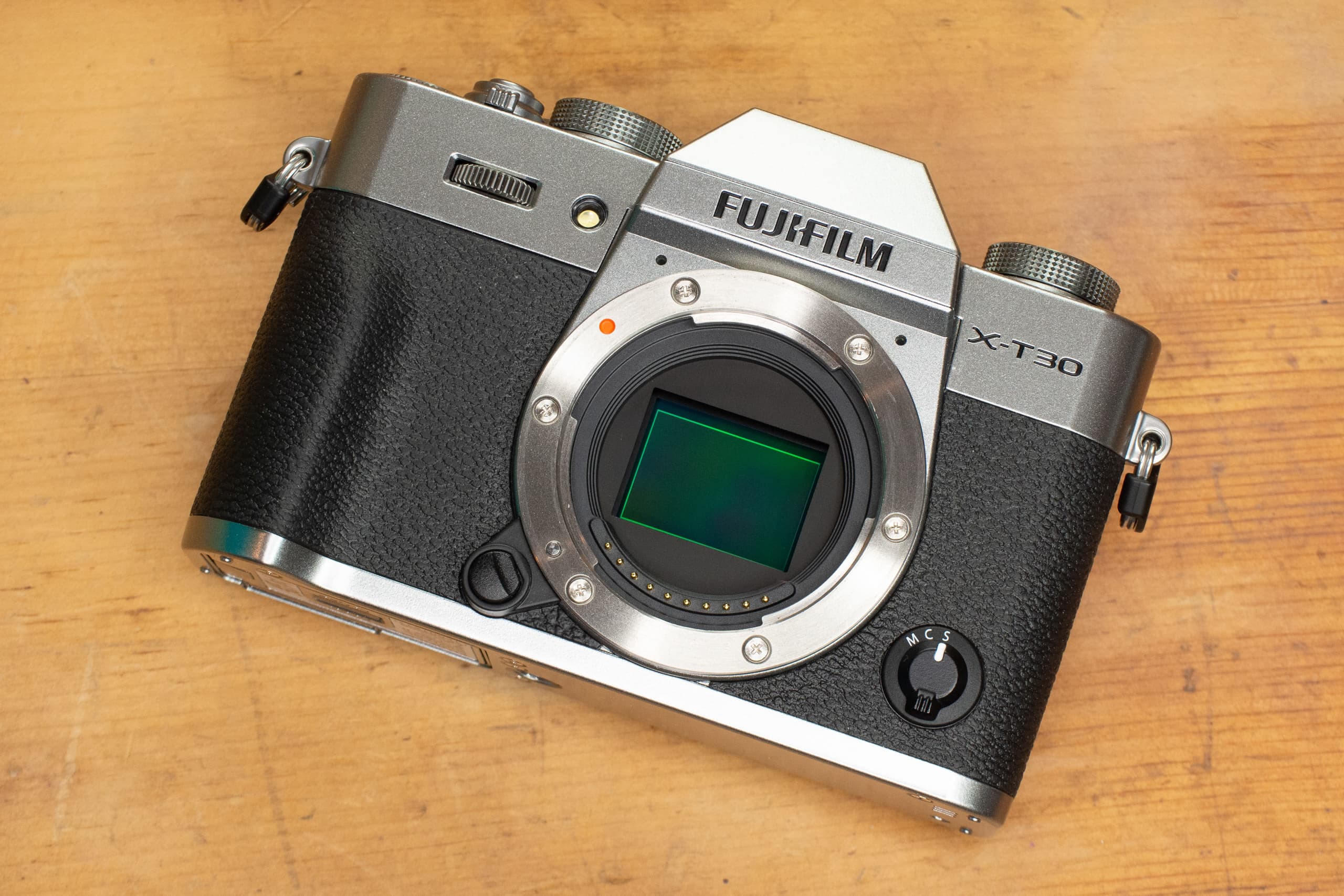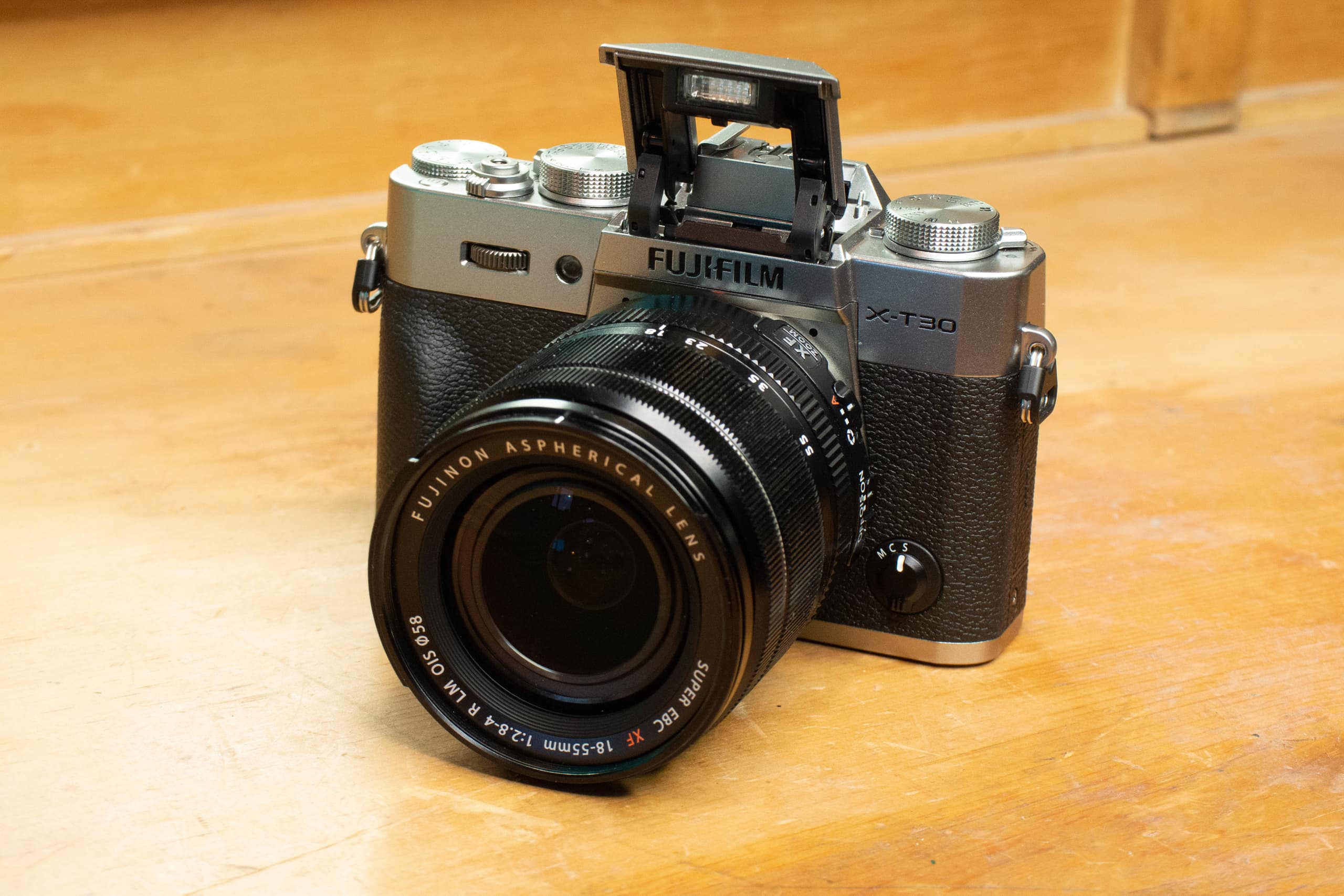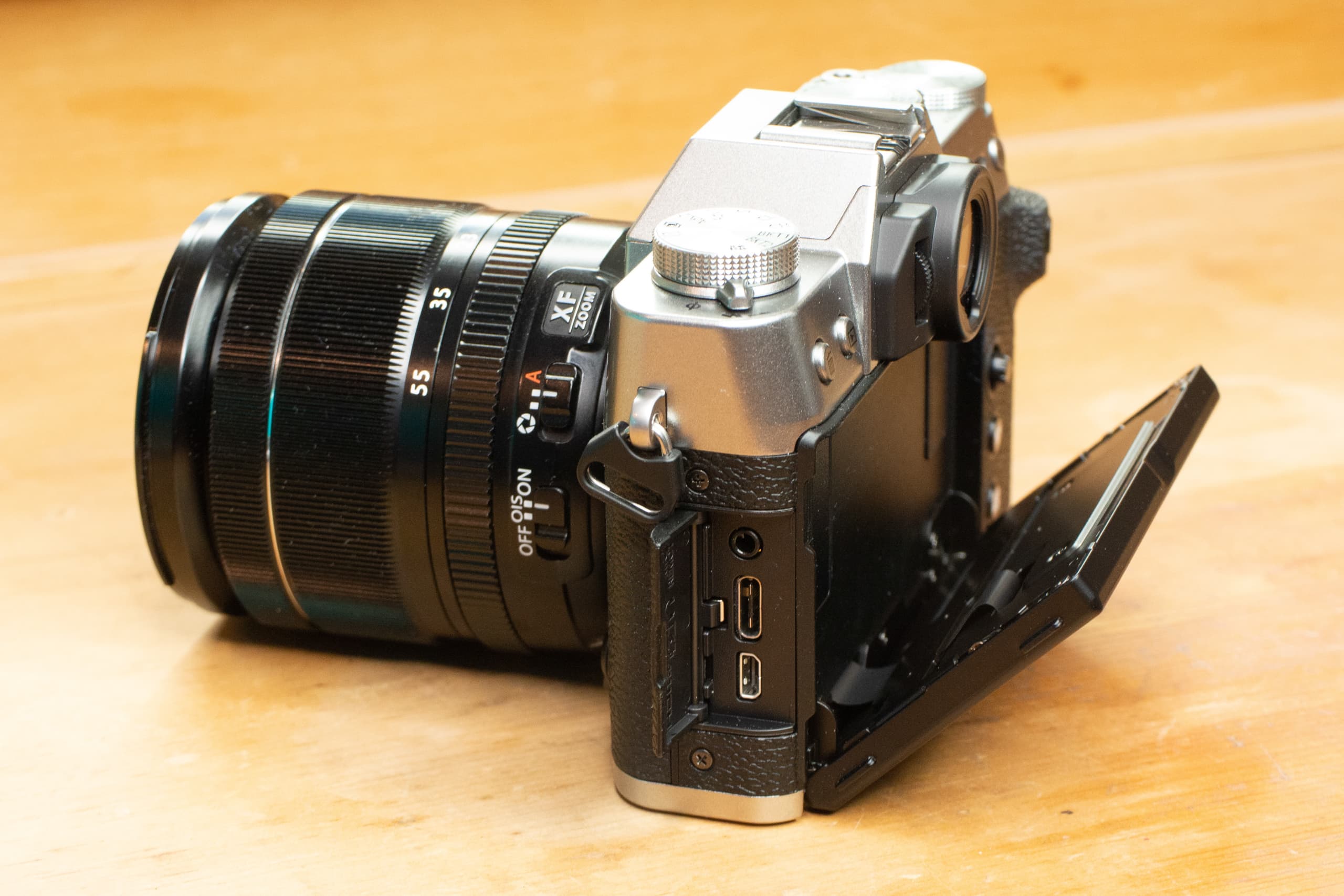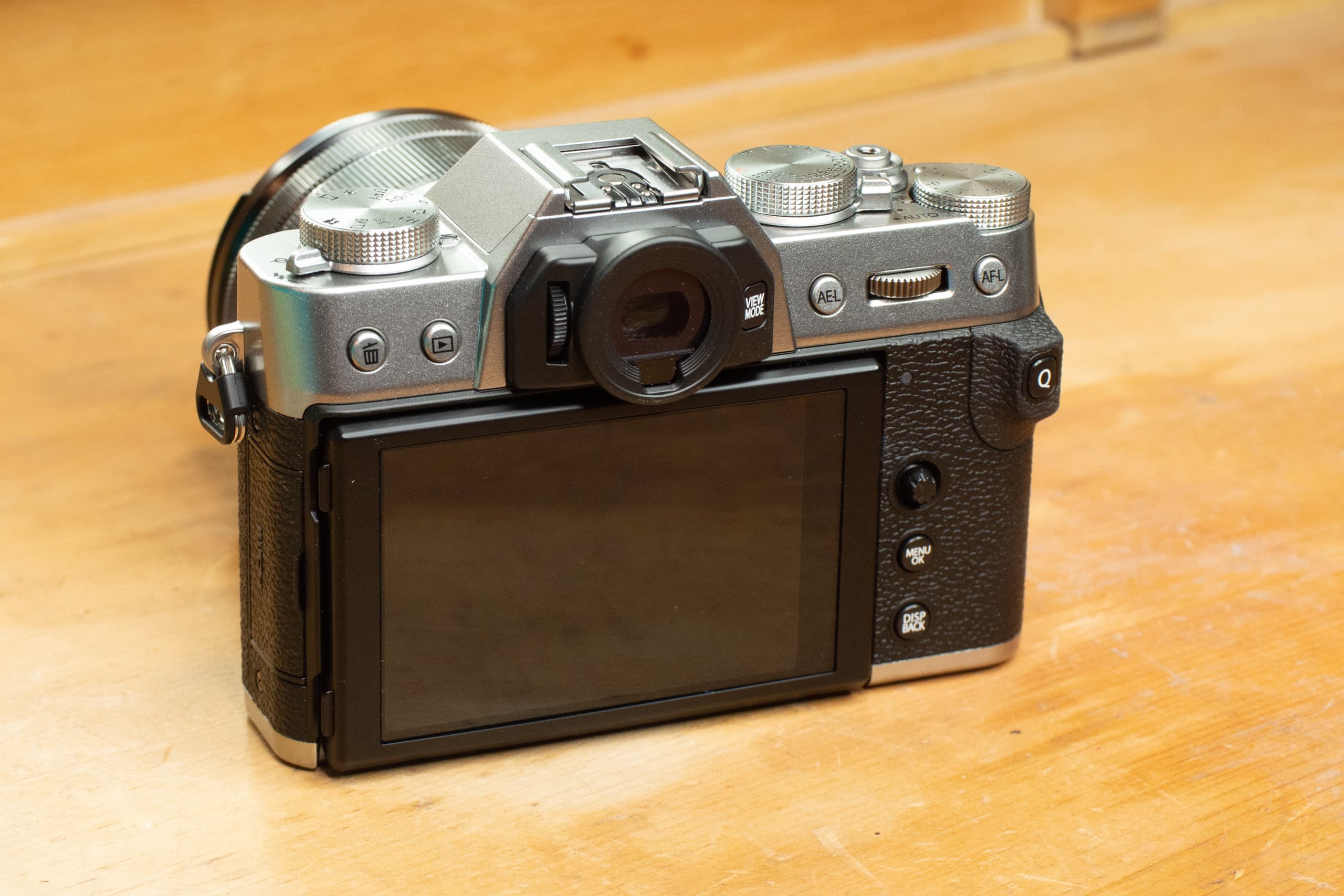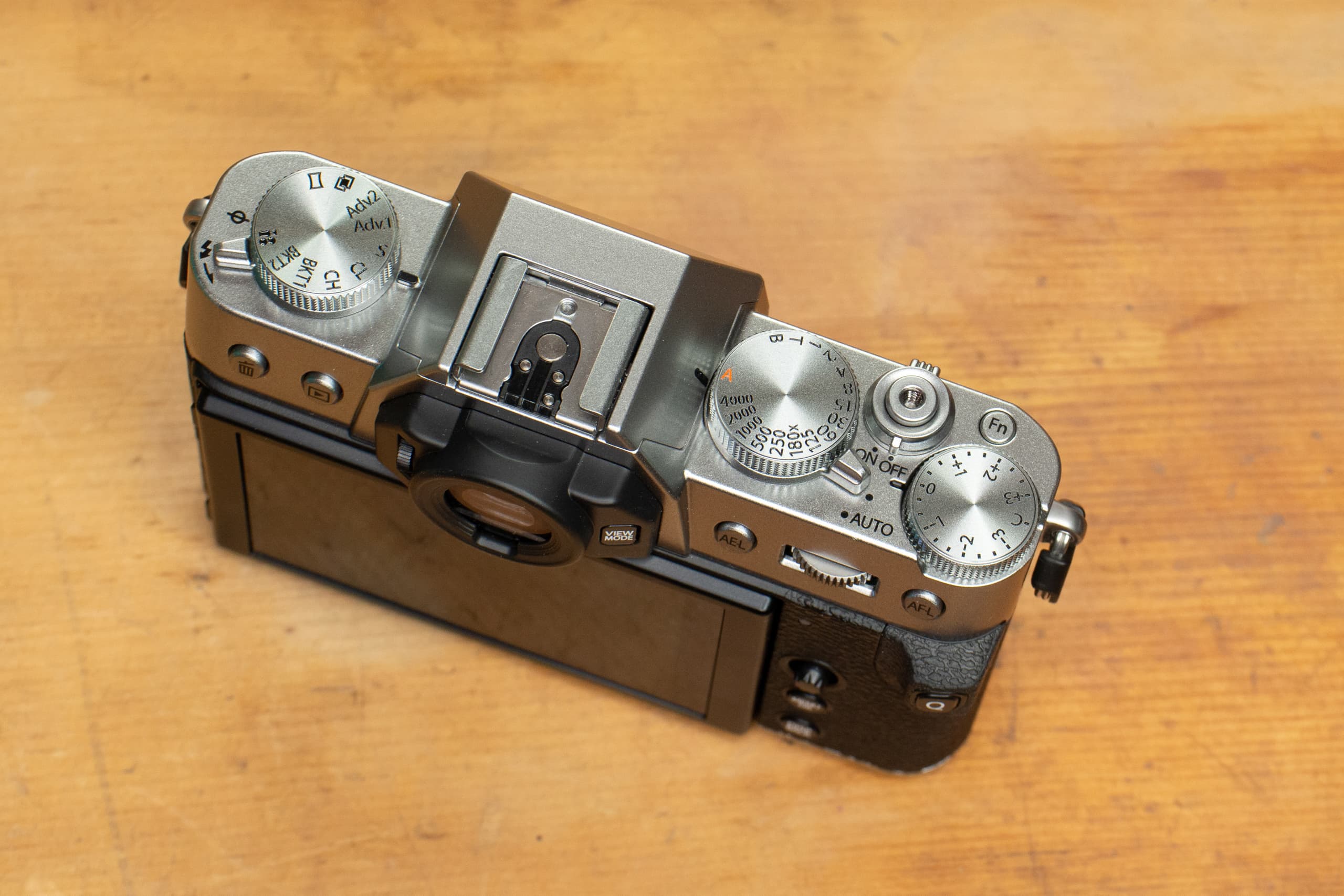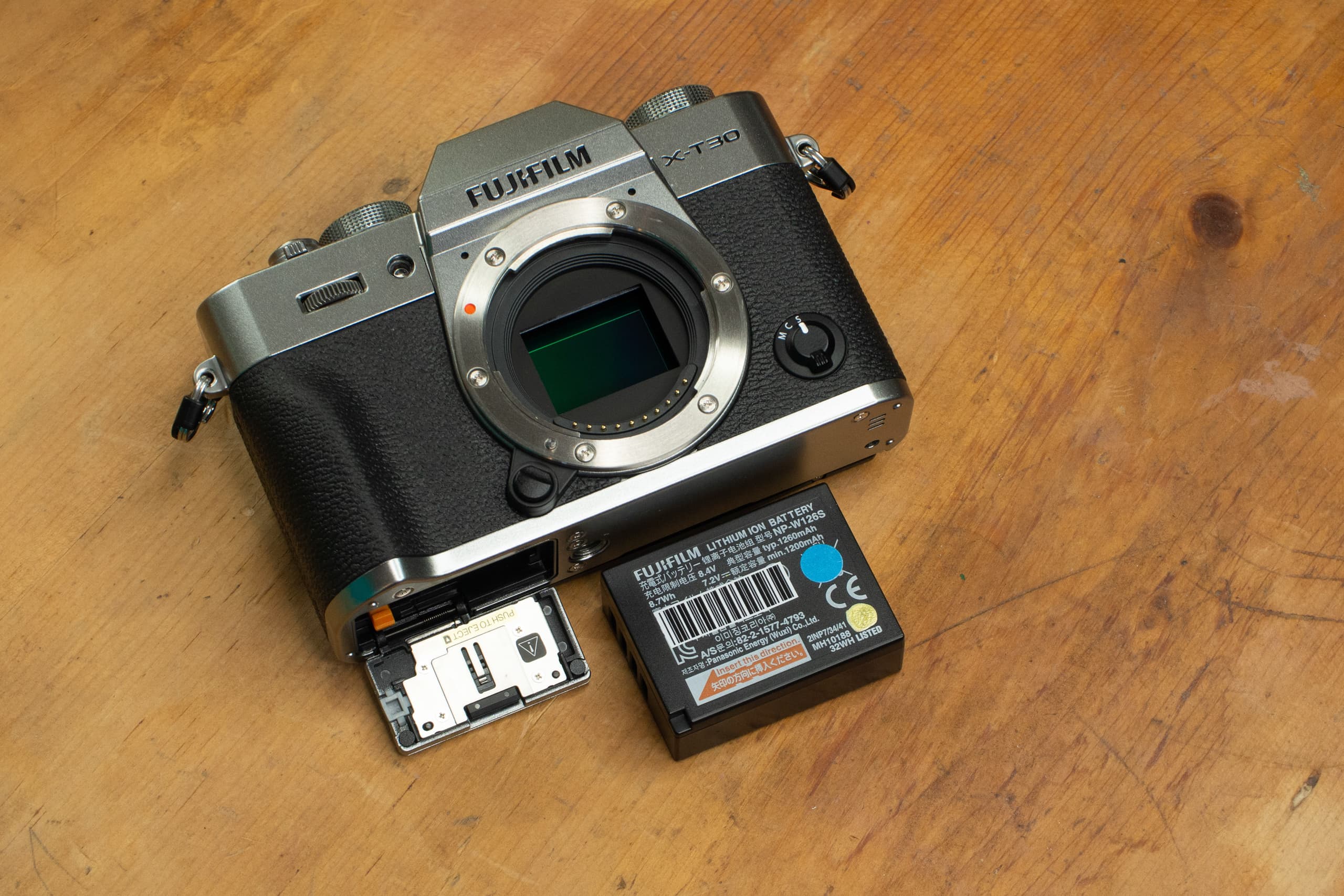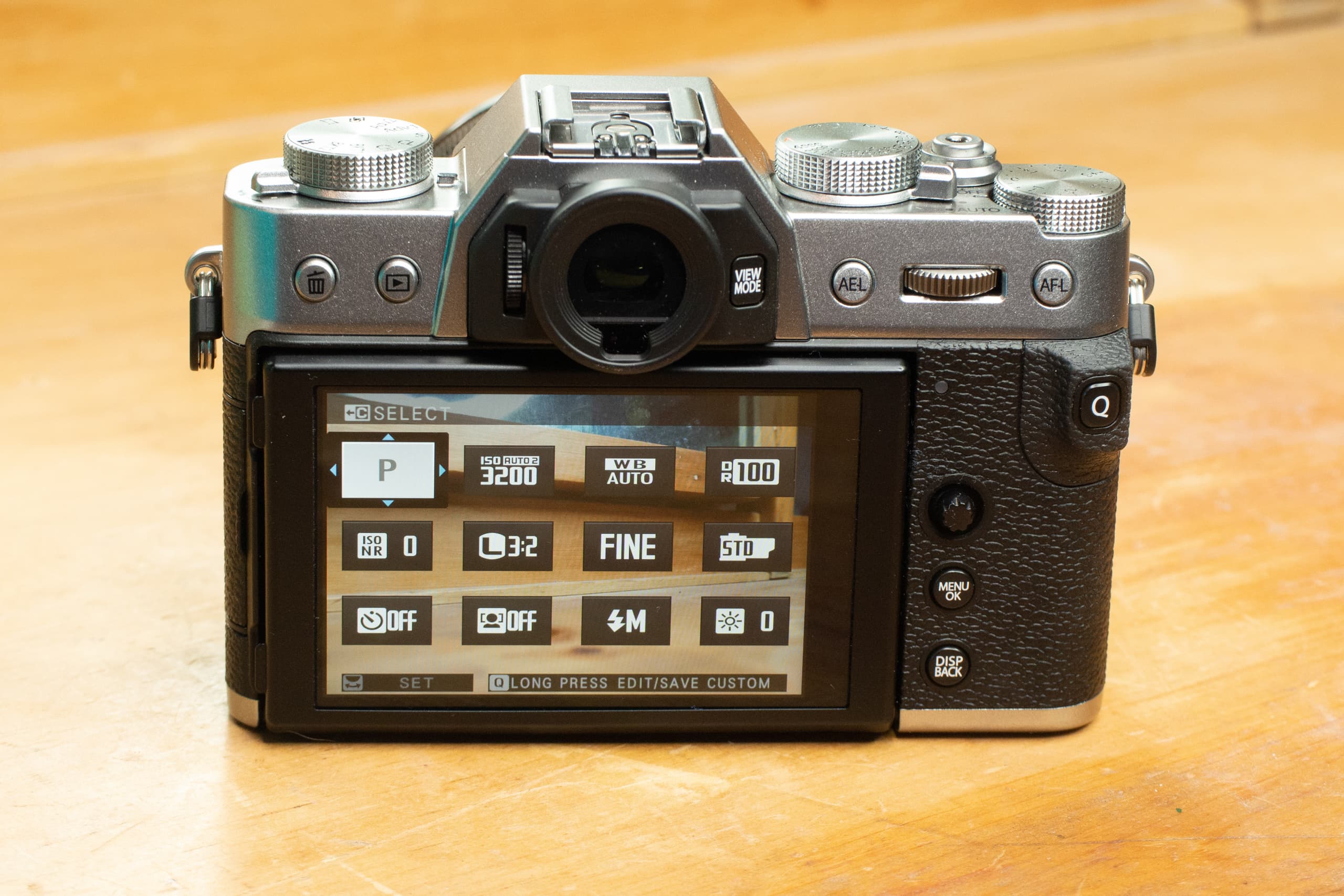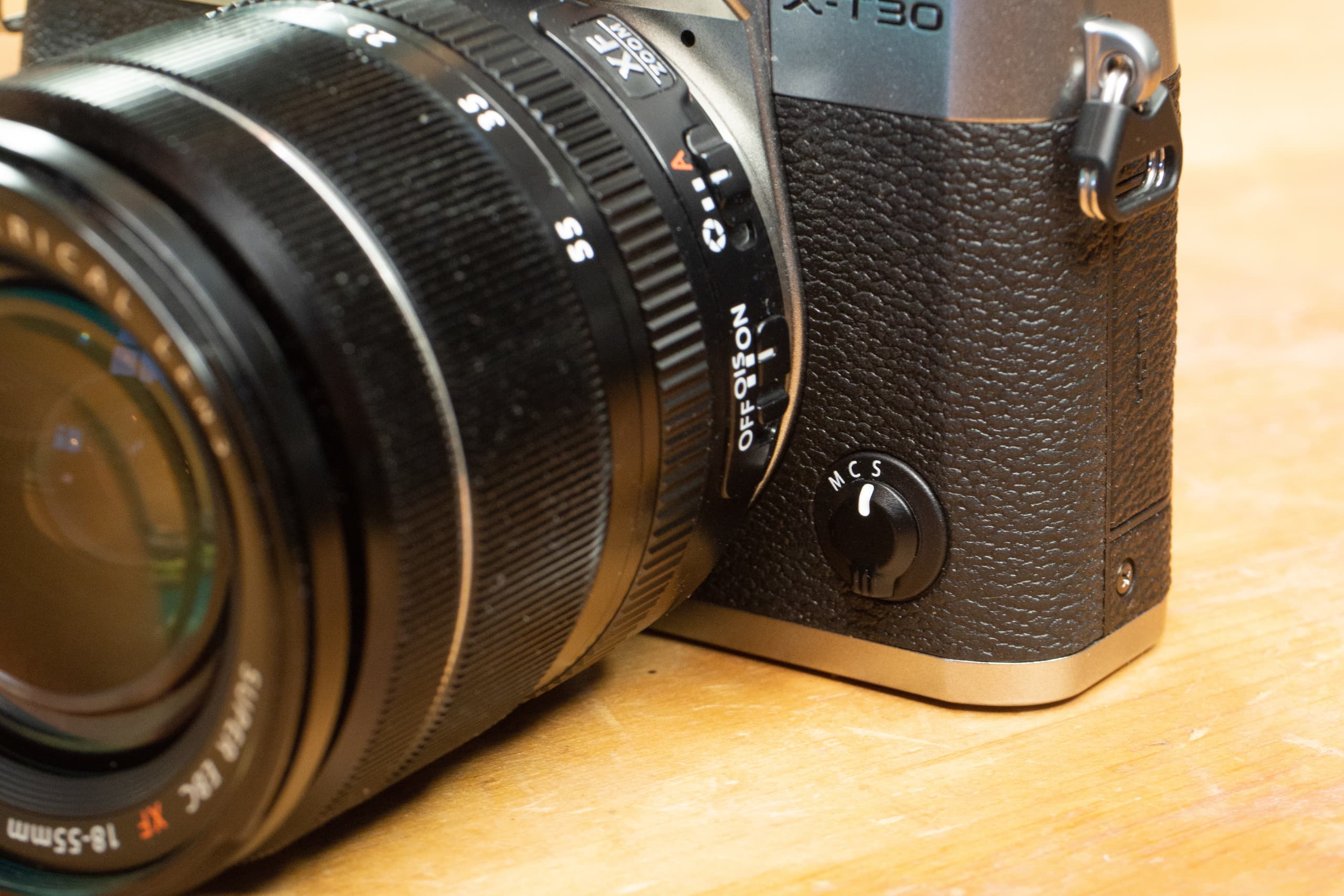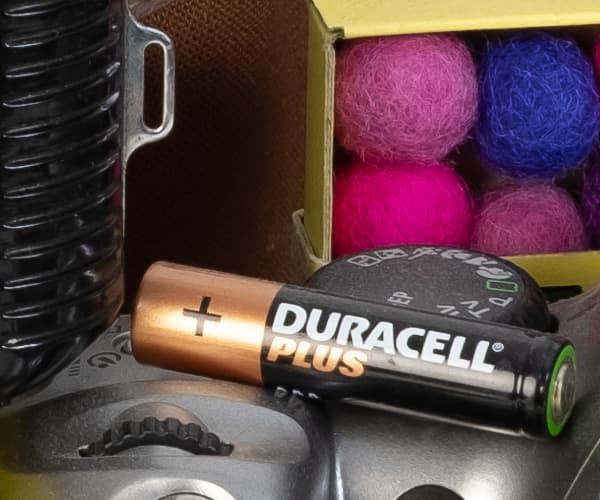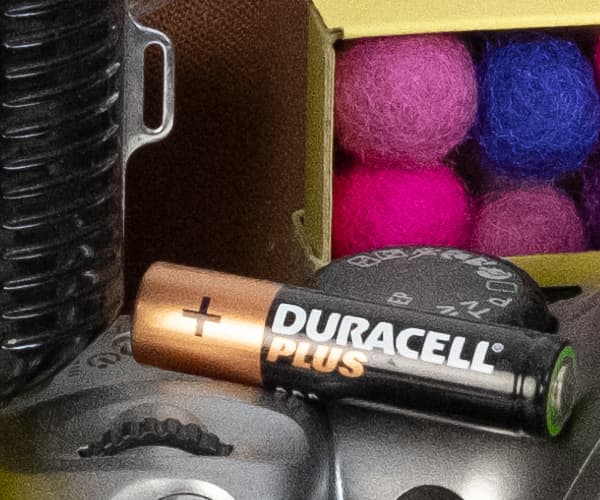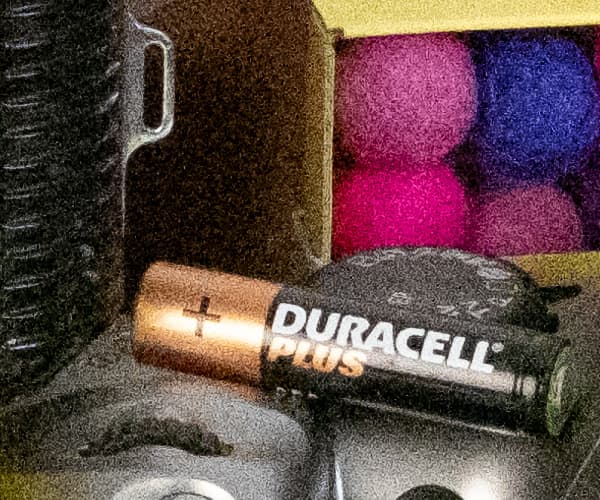Amateur Photographer verdict
The Fujifilm X-T30 II packs a lot of quality for its price, despite some operational quirks. A fantastic budget camera primarily as a compact for stills photography, yet with pleasingly capable video.- Great JPEG results straight from camera, lovely colours
- 20fps – 30fps continuous shooting (26.1mp/cropped/electronic)
- Same great image quality of the X-series range
- External manual controls (may not please everyone)
- Great value for money
- Metal build-quality
- Easy to knock exposure compensation dial
- Lacks in-body image stabilisation
- Tripod socket position not central
- 2.5mm microphone socket
- Small joypad, can accidentally press Q button
The Fujifilm X-T30 II arrived as an update to Fujifilm’s best selling and most popular camera in the X-series range, the X-T30 (and before that, the X-T20). The X-T30 II was introduced with an improved specification at a reduced price of £769 body only. Now around $800 / £700 it remains very competitively priced, considering what is on offer; hence it ranks among our best Fujifilm cameras.
You get the same 26.1MP APS-C X-Trans 4 CMOS sensor, as used in the flagship X-T4, which is roughly twice the price, as well as the same image processor. The X-T30 II also features 4K CINE video recording, a 3inch 1.62M dot screen, and an electronic viewfinder (EVF).
Fujifilm X-T30 II – At a glance
- Price – $899 / £799 body only, $999 / £899 with 15-45mm XC lens
- Sensor 26.1MP X-Trans CMOS IV Sensor
- ISO 80 – ISO51200 (extended)
- Speed: Up to 30fps with electronic shutter (cropped), 20fps uncropped
- Screen 3inch 1.62M-dot, tilting touchscreen
- Video 4K CINE/UHD 30,25,24fps video recording
- Wi-Fi and Bluetooth built-in
- Available in silver/black or all-black
Fujifilm say that buying this camera gives you the same image quality as the flagship camera, but instead you get a different camera body and features, with the X-T30 II lacking the weather-sealing of the X-T4, and the IBIS, amongst other things.
However, rather than focus on the differences between the X-T4 and X-T30 II, we thought it’d be better to look at the differences between the X-T30 Mark II, and the original X-T30.
X-T30 II vs X-T30 – New to the X-T30 II:
- 1.62M-dot 3inch touchscreen
- Classic Neg and Eterna Bleach Bypass film simulation modes
- Improved multi-exposure mode (up to 9 shots)
- High-speed video recording (FullHD, 240fps)
- Improved autofocus system from the X-T4
- 0.8mm thicker (due to newer screen)
- Improved buffer memory
- Refreshed menu system (splits stills/movie)
Fujifilm X-T30 II Features
At the heart of the X-T30 II you’ll find the 26.1MP X-Trans 4 CMOS sensor, which features a BSI (backside illuminated) design, as well as the X-Trans colour filter array, both are designed to give improved noise performance compared to non-BSI sensors, and the traditional Bayer sensor. The camera offers an ISO range from ISO80 (Low), up to ISO51200 (Extended).
One thing that this does mean, however, is that not every photo editing package can support the raw files from the camera, with DxO PhotoLab only recently adding raw support for Fujifilm raw files. However, this shouldn’t cause too much concern, as the camera features built-in raw editing, so you can quickly process raw files in the camera if needed.
With the same sensor and image processing as the X-T4 you also benefit from the high-speed shooting possibilities of the X-T4, and that includes up to 30fps continuous shooting, using the electronic shutter, albeit with a 1.25x crop that gives a 16.6MP resolution image. Drop down to 20fps and you get to shoot at 26.1MP. If you’re using the mechanical shutter then you can shoot at a maximum continuous shooting speed of 8fps.
In-Body Image Stabilisation (IBIS) isn’t included, and for that you need to look at the X-T4 or the X-S10, or pair the camera with an optically stabilisation lens, such as the 18-55mm f/2.8 OIS.
Of course, as a Fujifilm camera, it features all of the same film simulation filters as other X-series cameras, as well as the most recently introduced, which includes Classic Negative and Eterna Bleach Bypass.
Using the X-Mount, there are a range of Fujifilm lenses, with premium lenses available (XF), and more affordable lenses available (XC). As well as some options from third party manufacturers, with a number of lens options from Samyang, as well as Tamron. Something to look into is what lens you want, and how much it costs before committing to a camera system, something recommended for all camera systems.
In comparison to other mirrorless lens mounts, such as Micro Four Thirds, or Sony’s E-Mount, there is currently less third party support, but the range of X-Mount lenses from Fujifilm themselves is good, with 40+ lenses available.
As well as an abundance of manual controls that you can access directly, including the shutter speed, exposure compensation, and with an XF lens, the aperture, you can also use the camera in a full automatic mode, using the AUTO switch on the top panel. This makes it easy for anyone to use the camera, and can be a quick solution if you’ve accidentally got the settings wrong but still need to take a shot.
Bracketing options include AE, ISO, Film simulation, White balance, Dynamic range and Focus bracketing.
Face and eye detection autofocus is included and works with humans, with the option to give the left or right eye pirority, or leave the camera on auto eye selection, or switch this off entirely. AF points can be selected from a wide area of the screen, with 117/425 AF points selectable, from the camera’s on-sensor phase detection system.
Exposure can be set up to 15 minutes, or up to 1/32,000sec, with the electronic shutter enabled. Setting the shutter speed dial to T lets you control the shutter speed with the rear dial. The maximum shutter speed available using the mechanical shutter is 1/4000s, and bulb mode will let you extend the longest exposure up to 60 minutes.
On the top left drive mode dial, you’ll find a panoramic mode, multiple-exposure, Advanced filters, as well as the continuous shooting drive modes, bracketing, and the video mode. In the menus you can add additional effects, including a grain effect (giving film-like grain), a colour chrome effect, and colour chrome fx blue (off/on).
The monochrome filters let you add a Yellow, Red or Green filter, like you would when shooting with a black and white film camera.
With all of the different film effects and colour options you can shoot JPEG and raw, meaning that if you don’t like the colour tone in the JPEG you can always go back to the raw file and re-process the image to get a different look.
Video recording includes high-speed video at up to 240fps at a FullHD resolution, up to 60fps with normal FullHD video, and up to 30fps when recording CINE or UHD 4K video. There’s also support for clean HDMI output.
Image stabilisation is only available when using a lens with optical image stabilisation, and there is no digital image stabilisation option available.
Videographers might be interested to know that there’s a mini 2.5mm microphone socket on the side, and you can use a USB-C to 3.5mm adapter if you want to use headphones with the camera.
Fujifilm X-T30 II Need to know:
Like most other Fujifilm X-Series cameras, the retro design is functional as well as good looking, with direct access to most settings.
- USB charging – the NP-W126S battery is shared with other Fujifilm cameras, rated for 390 shots per charge, and can be charged in camera.
- Metal dials – the top dials are all made from knurled metal and with dual command dials you can easily change settings
- Flash – a tiny built-in flash pops up from the middle, and has a rating of 7 GN (at ISO200)
- Advanced SR Auto mode – Beginners can quickly switch into the Advanced Scene Recognition Auto mode, so you no longer have to worry about having the right settings.
- Shortcut button – There’s a rear Q button that brings up the onscreen menu giving you quick access to common settings
- Custom buttons, you can customise the Function button, plus the AEL/AFL buttons, as well as the View mode button
Fujifilm X-T30 II Build and Handling
If you’ve used the original X-T30, then the X-T30 II should feel immediately familiar to you, however you’ll find the X-T30 II benefits from updated menus, and this means that you get stills or video optimised menu options depending which mode you’re in.
Build quality is good with a mix of metal and plastic construction. Whilst the build quality doesn’t match the X-T3/X-T4 range of cameras, which benefit from weather-sealing, the build quality of the X-T30 II is certainly very good for the price, with the camera feeling solid and well made.
The Q-button is positioned on the rear thumb grip, and this makes it incredibly easy to accidentally press the Q-button, bringing up the Quick Control panel unnecessarily. This ended up being quite frustrating, and seems badly placed, especially as you need to loosen your grip on the camera to reach it with your thumb. This is particularly noticeable if you’re using the camera with one hand, but is less of an issue when holding the camera with two hands.
Perhaps people with smaller hands and therefore smaller thumbs may not suffer from this problem so much. You can also switch this button off, or change the function of the button, so if it is an issue, you can switch off the Q-button and then customise the Fn button to access the Quick menu instead.
The front and rear grips provide a good level of “stick” with a soft rubber covering, but if they feel a little too small, then you can add an optional grip that increases the size of the grip.
If you’re looking for a small mirrorless camera, check out our guide to the best small mirrorless cameras!
The front and rear command dials can be pressed in to access additional controls and functions, the front switching between changing the ISO speed or the aperture, and the rear being used to show a magnified view (on default settings). I found myself accidentally pressing these when I had no plans to press them in. You can disable these to avoid accidental camera settings if this is an issue.
There are four touch-screen “swipe” functions available, and these too can be customised or disabled. You can also customise the View mode, AEL and AFL buttons so that you can set them up to quickly give you access to your favourite settings.
The dials are easy to accidentally turn, including the top left drive mode, and exposure compensation dial (top right), so care needs to be taken when taking the camera in and out of bags.
The on/off switch features a shutter release cable thread, giving it the option to use a cable release, however we expect most people will want to use this to customise the shutter release button. The shutter release button feels good, but could easily be considered small in comparison to other cameras.
The NP-W126S battery is charged in-camera using the provided USB-C cable. Battery life is rated at a respectable 390 shots, or 45 minutes of video recording. If you need to you can power the camera whilst shooting / recording.
There is no dedicated battery charger, but these can be picked up relatively cheaply if you want to charge a second battery outside the camera. Backwards compatibility is something worth mentioning, as the X-T30 II will accept the same battery as other Fujifilm cameras
Menus are colour coded with red for photo/video settings, setup in blue, MyMenu in purple, and playback in blue.
To add items into the MyMenu section, for quicker access, you have to go into the Setup menus, then User settings, then MyMenu settings, then you’ll find ‘add items’. You can’t quickly add items to the MyMenu screen from within MyMenu, you have to go through these steps every time you want to add or remove a setting. It would have been much quicker and easier if Fujifilm had added a shortcut to “add items” from within the MyMenu screen. Perhaps a future firmware update will add this?
Once you do setup the MyMenu options, the camera will take you directly to MyMenu whenever you press the Menu button, rather than the last place you were in the menus, which you might find frustrating.
Some parts of the menu system include additional help and information, and the film simulations have additional details, accessed by simply pressing the Q button when selecting the film simulation.
The Q (Quick) menu gives you quick access to a wide number of common settings, and these can be customised so that you can put your most used settings here if you don’t like the default options.
Viewfinder and screen
There’s a 3.0inch tilting touchscreen, updated since the X-T30, with a higher resolution of 1.62M-dot, with a gapless design, which means it looks great, with excellent colour reproduction. There’s an electronic level available, that can be switched on in the menus, however it isn’t dual-axis. The screen can’t be tilted far enough to be used for vlogging or as a selfie screen.
The electronic viewfinder (EVF) hasn’t changed since the X-T30, and features the same 2.36M-dot resolution, and with a 0.62x magnification, the view is reasonable for an entry level camera with an EVF.
Autofocus
The X-T30 II has 117/425 AF points letting you set how precise you want to be when setting your focus point. Using a combination of contrast AF and on-sensor phase detection AF, focus is rapid and reliable, locking onto subjects quickly.
Face and eye detection works very well, giving you confidence when shooting people. However, the camera doesn’t benefit from animal or bird detection, which hasn’t yet been introduced to Fujifilm cameras.
Single AF, Continuous AF, Manual Focus can all be selected using the front switch. Tracking AF is also available, as well as AF+MF – which can be switched on in the menus. You can also adjust the MF assist modes, with an option to use digital split image, digital microprism, or focus peaking – with a choice of colours.
Fujifilm X-T30 II Performance
The X-T30 II is available body only, or as a kit with the XC 15-45mm PZ OIS lens, or the 18-55mm OIS lens. With the 15-45mm compact power zoom lens, equivalent to 23mm to 69mm, there is a slightly slower switch on time, due to the lens extending from its collapsed position. However, with a standard lens such as the 18-55mm lens, the switch on time is rapid, and the camera responds quickly to any changes you make to settings.

The touchscreen can be used to set the focus area, set the focus point (and have the camera focus on it), or to take a shot, or you can switch this functionality off. You can set the focus point to almost any area on the screen, with just the very far left and right being unavailable.
Metering is extremely reliable, with little need for exposure compensation. You’ll also find the level of dynamic range captured in JPEG images is generally very good, especially when using the dynamic range (DR) options.
When shooting images, you can select from different dynamic range options, without having to use the multi-shot HDR mode. The dynamic range options give you a choice of Auto, which will select from the different DR options, which include DR100 (full ISO range available), DR200, (ISO320 or more), and DR400 (ISO640 or above).
Using the HDR mode you get a photo combining a number of shots taken at different exposures, with options for HDR200, HDR400, HDR800 and HDR800+ which gives more extreme HDR look.
In-camera raw editing is possible, and is a great way to adjust images if needed, for example if you’d like to alter the white balance settings, or shadow/highlight settings.
In most circumstances you shouldn’t need to edit raw images, as the camera produces excellent JPEG images straight from the camera, with both pleasing colour, and good levels of detail and sharpness, particularly when using a prime lens. However, you may want to process raw files if you want to adjust sharpness and clarity to your own personal preferences.
Colour reproduction on default settings is very pleasing, however, the camera excels in letting you setup the look of photos, with numerous film simulations to choose from, as well as colour chrome effect (deeper reds), or colour chrome effect blue, which gives deeper blues. You can also adjust the tone curves for highlights and shadows to customise the appearance of images. There are also options for clarity, colour (saturation), and sharpness.
If you like fiddling with settings, then you’ll be in paradise, but if you ever find yourself overwhelmed by options, and uncertainty when setting up a camera, then you may find this daunting. You either like the ability to change hundreds of settings, or you like it when things are kept simple. You don’t have to use these settings, but it’s nice that they’re there for those that do want to fiddle.
Read our guide to setting up your Fujifilm JPEG camera settings.
Auto White Balance gives you all the usual presets you’d expect, plus auto white balance with white priority, or ambient priority, depending on whether you want to capture white backgrounds for example when shooting product shots, or ambience for capturing the mood of a scene. There are multiple custom white balance options, as well as an underwater preset. If you’re ever unconvinced by the auto white balance results, then using one of the presets is one way to get better colour, for example on cloudy days, using the cloudy white balance setting will give you much more pleasing looking images.
Image stabilisation isn’t included in the camera body, but does work well if you use an optically stabilised lens with the camera such as the 18-55mm OIS lens.
Fujifilm X-T30 II ISO and Noise
There’s an ISO range of ISO160 to ISO12800 available, with an additional LOW ISO speed from ISO80 available, albeit with a reduced dynamic range when using the lower settings, plus at the higher end, you can extend the ISO speed to ISO25600 and ISO51200. Noise options let you set High ISO noise reduction to +4, all the way to -3, with the default being 0.
Shooting JPEG images, the default settings give excellent results, with usable images up to ISO6400 / ISO12800, above this you may want to resize your image or process the raw files to more finely tune the noise reduction. Below are 100% crops taken from our standard test scene. Click on any thumbnail to see the full-size image.
Video recording
Despite being the entry-level camera in the range, there appear to be no limitations in video recording quality, with both 4K CINE and UHD options available as well as a full range of frame rates including 29.97/25/24/23.98p, and compression options of 200/100Mbps. It can also record up to 30 minutes at a time.
FullHD video lets you record at frame rates up to 60fps, with compression options of 200/100 and 50mbps. High-speed fullHD video offers frame rates up to 240fps, with a crop, and without audio.
There are far more video options available than you would expect for an entry-level camera, including Zebra display, microphone level settings (internal/external), F-log recording, tally light options, interframe NR, plus time code settings.
If you do plan on changing batteries, then the tripod socket position could cause problems when using the camera on a tripod. However, you could solve this by using power over USB.
Note that the X-S20 is Fujifilm’s true specialist for video and vlogging enthusiasts, currently available for $1,299 / £1,049.
Video quality is very good, with plenty of detail, and with an optically stabilised lens, handheld video can be quite stable. Wind noise can be a problem when using the internal microphones, even with wind reduction switched on. The auto focus is quite reliable, although your results are likely to vary depending on the lens you’re using.
Fujifilm X-T30 II Verdict
The Fujifilm X-T30 Mark II may not seem like much of an update compared to the X-T30, and whilst that may be true, it doesn’t stop it from being an excellent camera. The X-T30 was (and still is) a great camera and, similarly, the X-T30 II is also a great camera.
Slightly improved over the original, but at a lower price, the X-T30 II would make a great mirrorless camera for those looking for excellent image quality, in a compact and portable camera.
The main alternative to the X-T30 II is another from Fujifilm: the X-S10, currently going for around $1,600 / £1,100. It benefits from built-in in-body image stabilisation, and a larger DSLR style grip, which could draw many to prefer it to the X-T30 II.
From other manufacturers, the Olympus OM-D E-M10 IV is a great choice for $700 / £649 body only, although it does have a plastic rather than metal construction.
Another thing that the Fujifilm X-T30 II has going for it, is the metal build quality, and metal dials on the body. Sharing the 26.1MP sensor and image processing from the flagship X-T4, you get the same exceptional image quality and rapid auto-focus, for roughly half the price of the X-T4, making the X-T30 II great value for money.

If you’re looking for a small mirrorless camera, check out our guide to the best small mirrorless cameras!

